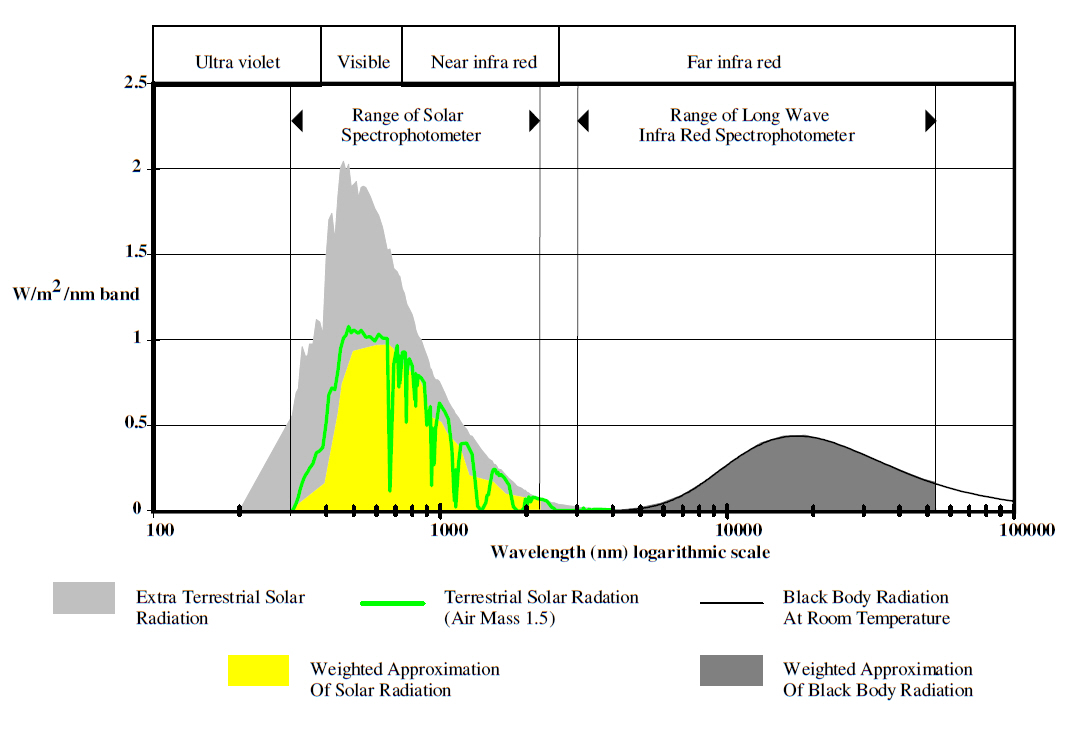Visible light
Visible light (or the visible spectrum) is a form of electromagnetic radiation. The electromagnetic spectrum includes radio waves, microwaves, infrared radiation (IR), visible light, ultraviolet light (UV), X-rays and gamma-rays. Visible light falls within the range of wavelengths from approximately 380 - 740 nanometers (nm), between the infrared and ultraviolet wavebands.
Visible light represents the range of light that is visible to the human eye. Human eyes contain ‘receiver’ cells called 'cones' that can detect wavelengths within this relatively small part of the electromagnetic spectrum.
Visible light comprises a number of colours that are typically categorised as:
- Red (around 650 nm).
- Orange (around 589 nm).
- Yellow (around 570 nm).
- Green (around 510 nm).
- Blue (around 475 nm).
- Indigo (445 nm).
- Violet (around 400 nm).
Combinations of these colours can create other colours. For example, the combination of red light and blue light will create magenta light. The combination of all colours will create white light. The absence of any light from the visible spectrum is perceived as being black.
Typically, when we see a colour, it is as a result of that wavelength of light reflecting from or transmitting through a body towards our eyes, whilst other wavelengths of the visible spectrum are absorbed by the body or reflected away from our eyes.
[edit] Related articles on Designing Buildings
Featured articles and news
The history of building regulations
A story of belated action in response to crisis.
Moisture, fire safety and emerging trends in living walls
How wet is your wall?
Current policy explained and newly published consultation by the UK and Welsh Governments.
British architecture 1919–39. Book review.
Conservation of listed prefabs in Moseley.
Energy industry calls for urgent reform.
Heritage staff wellbeing at work survey.
A five minute introduction.
50th Golden anniversary ECA Edmundson apprentice award
Showcasing the very best electrotechnical and engineering services for half a century.
Welsh government consults on HRBs and reg changes
Seeking feedback on a new regulatory regime and a broad range of issues.
CIOB Client Guide (2nd edition) March 2025
Free download covering statutory dutyholder roles under the Building Safety Act and much more.
AI and automation in 3D modelling and spatial design
Can almost half of design development tasks be automated?
Minister quizzed, as responsibility transfers to MHCLG and BSR publishes new building control guidance.
UK environmental regulations reform 2025
Amid wider new approaches to ensure regulators and regulation support growth.
The maintenance challenge of tenements.
BSRIA Statutory Compliance Inspection Checklist
BG80/2025 now significantly updated to include requirements related to important changes in legislation.























